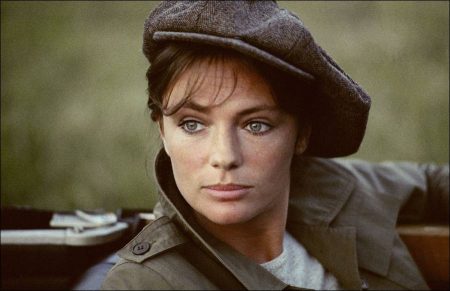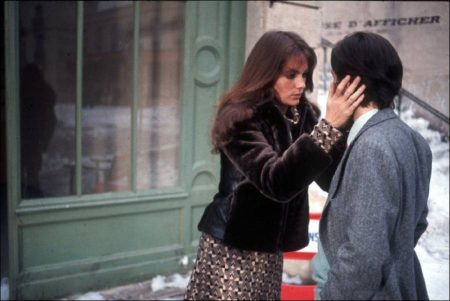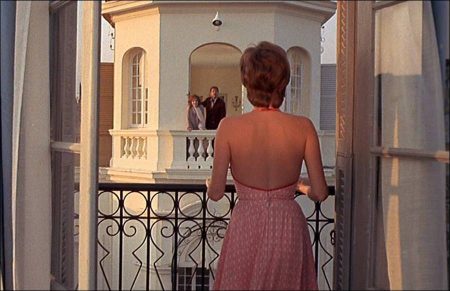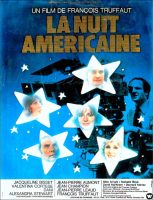Taglines: A movie for people who love movies.
La Nuit Américaine movie storyline. In Nice, the Studios La Victorine is producing the film “Je Vous Presente Pamela”, about a French man that marries the English Pamela in England and brings his wife to France to introduce her to his parents. However, his father and Pamela fall in love with each other and she leaves her husband to live with him.
The producer Bertrand and the director Ferrand invite British Julie Baker, who had a nervous breakdown and married her Dr. Nelson, to the role of Pamela. During shooting, the cast and crew are lodged in the Hotel Atlantic and Bertrand and Ferrand have to deal with problems with the stars Severine, an aging actress with drinking problems that affect her performance; the immature, spoiled and needy Alphonse; Julie that is emotionally unstable. But in the end, they succeed in completing the film.
La Nuit Américaine is a 1973 French film directed by François Truffaut. It stars Jacqueline Bisset and Jean-Pierre Léaud. Its original French title is La Nuit américaine (“American Night”), the French name for the filmmaking process whereby sequences filmed outdoors in daylight are shot using a filter placed over the camera lens (the technique described specifically in the dialogue of Truffaut’s film).

Also using film stock balanced for tungsten (indoor) light and underexposed (or adjusted during post production) to appear as if they are taking place at night. In English, the technique is called day for night, which is the film’s English title. It had its premiere out of competition at the 1973 Cannes Film Festival and won the Academy Award for Best Foreign Language Film the following year.
One of the film’s themes is whether or not films are more important than life for those who make them. It makes many allusions both to film-making and to movies themselves, perhaps unsurprisingly given that Truffaut began his career as a film critic who championed cinema as an art form. The film opens with a picture of Lillian and Dorothy Gish, to whom it is dedicated. In one scene, Ferrand opens a package of books he has ordered: they are books on directors he admires such as Luis Buñuel, Carl Theodor Dreyer, Ingmar Bergman, Alfred Hitchcock, Jean-Luc Godard, Ernst Lubitsch, Roberto Rossellini and Robert Bresson.
The film’s title in French could sound like L’ennui américain (‘American boredom’): Truffaut wrote elsewhere of the way French cinema critics inevitably make this pun of any title which uses ‘nuit’. Here he deliberately invites his viewers to recognise the artificiality of cinema, particularly the kind of American-style studio film, with its reliance on effects such as day-for-night, that Je Vous Présente Paméla exemplifies.
Film Review for La Nuit Américaine
harlie Chaplin had been making movies for less than a month when he appeared in A Film Johnnie, a one-reel comedy about moviegoing and moviemaking set around the Keystone Studio. This genre of films with a movie background has flourished ever since, with pictures ranging from Nicholas Ray’s In a Lonely Place to Satyajit Ray’s Nayak. While most are set in Hollywood, three of the very best are by European directors: Fellini’s 8½, Godard’s Le mépris and Truffaut’s Day for Night (aka La nuit américaine).
Truffaut’s warm, humane film, made in 1973, can be seen as a delayed riposte to Godard’s acrid attack on the commercial cinema in Le mépris, the action of which it closely parallels. A vicious letter Godard wrote to Truffaut about Day for Night effectively turned their friendship into a bitter enmity.
Set in Nice’s Victorine Studios, where it was filmed, Day for Night is a touching, funny and accurate account of the travails (accidents, disputes, affairs, imbroglios, death) involved in the making of an all-star international picture called Je vous présente Paméla. It is a Pirandellian affair, an elegiac celebration of a dying kind of cinema, a meditation on the connection between film and life by Truffaut, who plays Ferrand, the film’s constantly troubled yet dedicated director, a man much like himself. Ferrand compares the process of film-making to “a stagecoach journey into the far west. At the start you hope for a beautiful trip. But shortly you wonder if you will make it at all.”
He lives for the movies and at night has a recurrent monochrome dream about what appears to be a horrific childhood experience. It turns out to be a memory of stealing cherished stills of Citizen Kane from a cinema foyer. My favourite line is spoken by the lovely Nathalie Baye as Truffaut’s indispensable assistant: “I’d give up a guy for a film, but I’d never give up a film for a guy.”
Le mépris is arguably a better, more trenchant film and has a commanding performance by Fritz Lang as the director of the film within the film. But Day for Night is the one I love, and among its many delights is the brief appearance as a British insurance adviser of Graham Greene, credited as Henry Graham. His real identity was unknown to Truffaut who cast him for his distinguished appearance, believing him to be a retired English businessman living in the South of France.
The film has a special moment that always makes my heart leap. It occurs when Truffaut receives a parcel of books, which he eagerly cuts open and tosses them one by one on to the table in front of him. They’re monographs on directors, all in French except for two – Robin Wood’s Hitchcock and a symposium on Jean-Luc Godard to which I contributed the chapter on Une femme mariée.
La Nuit Américaine (1973)
Directed by: François Truffaut
Starring: Jacqueline Bisset, Valentina Cortese, Alexandra Stewart, Jean-Pierre Aumont, Jean Champion, Jean-Pierre Léaud, François Truffaut, Nathalie Baye, Nike Arrighi, Maurice Seveno
Screenplay by: François Truffaut, Suzanne Schiffman, Jean-Louis Richard
Production Design by: Damien Lanfranchi
Cinematography by: Pierre-William Glenn
Film Editing by: Martine Barraquè-Curie, Yann Dedet
Costume Design by: Monique Dury
Art Direction by: Damien Lanfranchi
Music by: Georges Delerue
MPAA Rating: None.
Distributed by: Warner Bros. Pictures
Release Date: May 14, 1973 (Cannes), May 24, 1973 (France)
Views: 265



